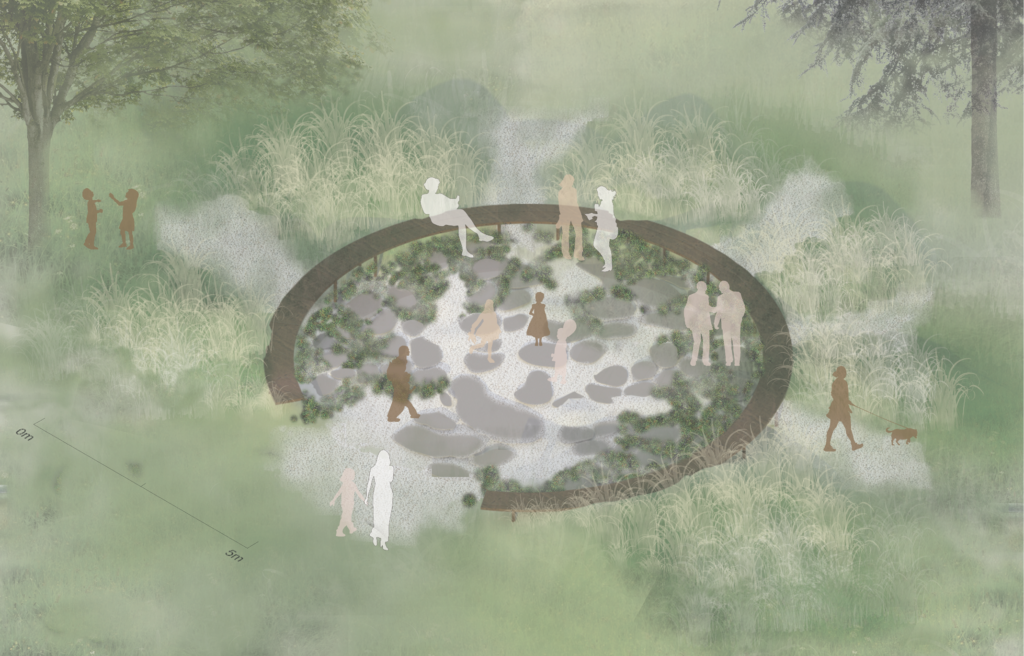
Brockton Point at Stanley Park has a complex but hidden history, from early settlement by Europeans to the past existence of sport grounds at the Point. One narrative that is often not discussed is the history of Indigenous presence at Stanley Park, and the existing totem poles exhibit is far from a true representation of their heritage and identity. A thick section researches the geomorphology at the site and explores how geology should go beyond a scientific representation, as Indigenous groups have a rich oral history of how the earth and land came to be. The drawing explores the origin stories of the Musquem, Tslei-Waututh, and Squamish origin stories and attempts to decolonize the land beyond an occupation and colonial mindset. As a continuation of the thick section, a design intervention at this site provides a space that encourages viewers to reflect on Indigenous identity and our connection with the land. The intent is to offer a gathering place and a site of reflection where visitors can connect with the landscape and reflect on how the land came to be. It is a safe place to allow for conversations to take place, for the unrevealing and rediscovery of Indigenous origin stories, and for us to both listen and share – in order to understand the past and also shape what our future relationships can hold. Note: while this is an academic exercise, the author recognizes that all details of this design, including the name, should be created in collaboration with Indigenous groups